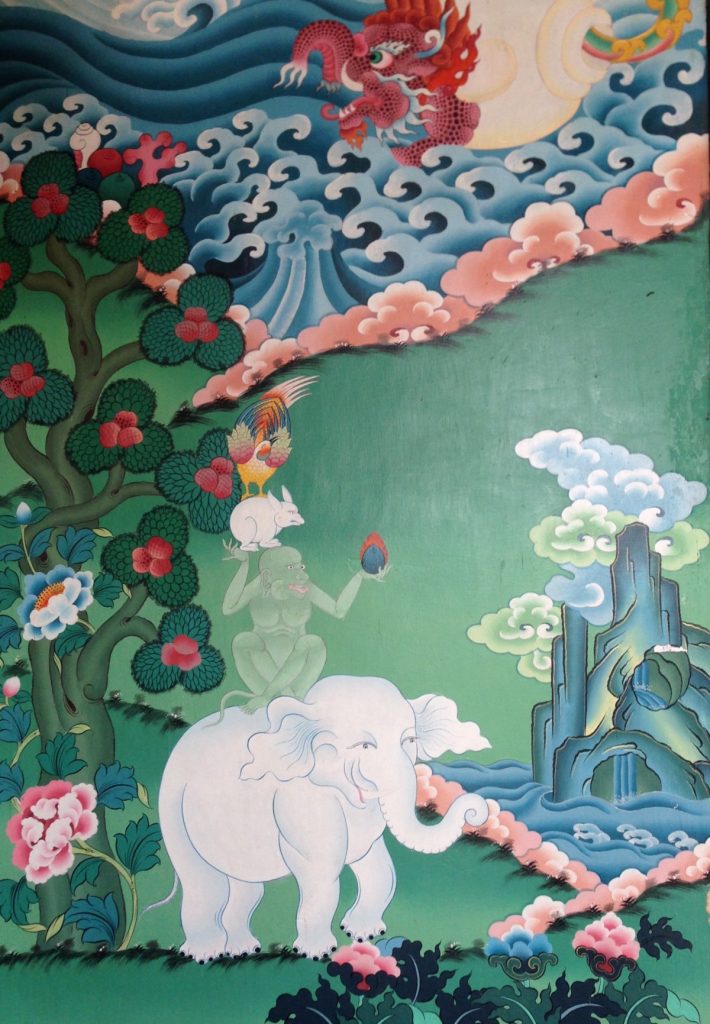Decoding Bhutanese Art
In Bhutan paintings are executed to express devotion. So, one way or the other, representation in Bhutanese art is a dramatization of the struggle between good and evil. According to Bhutanese tradition, art has more to do with interpreting values rather than describing facts. An artist’s aim, by the symbolic value of their artwork, is to show the path to the spiritual experience of which their work is the outward and visible form. Simply put, Bhutanese art has two main characteristics – it is religious and anonymous.
As far as paintings go, there are basically three forms: thangkas, wall paintings and statues. A painting may depict a deity, a legend, a religious narrative, a meditational object, or an array of auspicious symbols, but one thing is for certain, it is always religious in nature.

Paintings, in particular the portrayal of human figures, are subject to strict rules of iconography. The proportions and features must be precise, and there is no latitude for artistic license in these works. The initial layout is constructed with a series of geometrical patterns using straight lines to lay out the proportion of the figure. These proportions are well defined in religious documents called zuri pata. In other cases, the initial sketch is made with a stencil providing a basic outline of the figure. The outline is transferred to the canvas by patting the stencil with a bag filled with chalk dust.
Thangkas or religious scrolls are painted on canvas that is stretched and lashed to wooden frames. Once complete, the artwork is removed from the frame and surrounded by a border of colorful brocade. The inner walls of dzongs or monasteries too are covered with paintings. This is done by the wall murals being painted on a thin layer of cloth and then applied to the walls using a special paste. Old paintings throughout the kingdom are treasured because of their historic and artistic value.
A familiar Bhutanese art theme is the Thunpa Punzhi or ‘the four friends or harmonious brothers’–an elephant, monkey, hare and partridge forming an acrobatic pyramid beneath a tree. The painting portrays a Buddhist allegory of friendship and cooperation among different species of animals.

